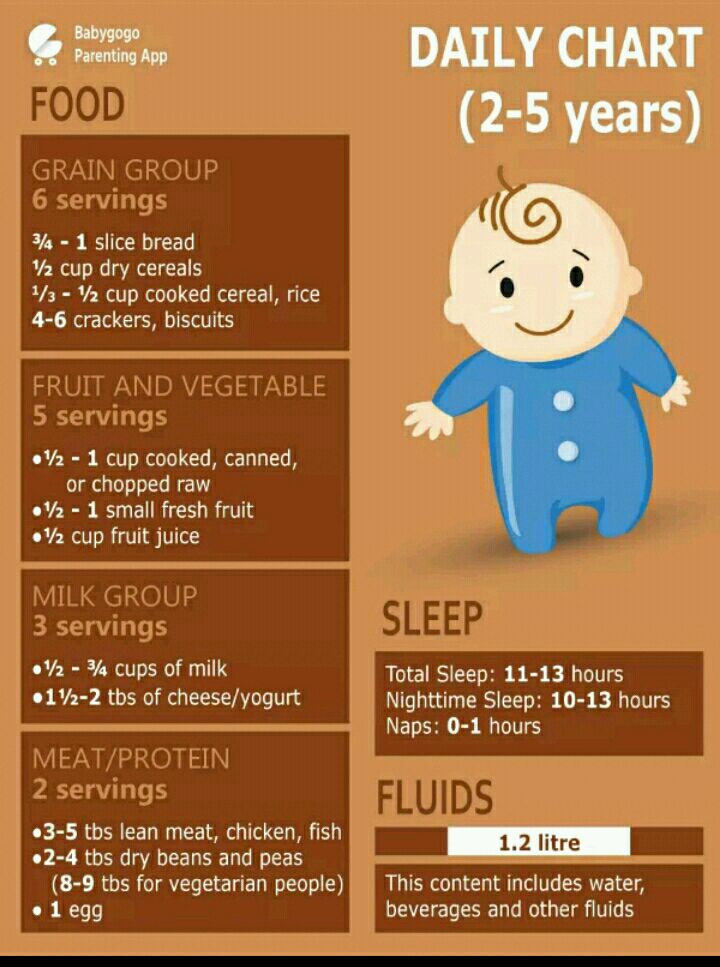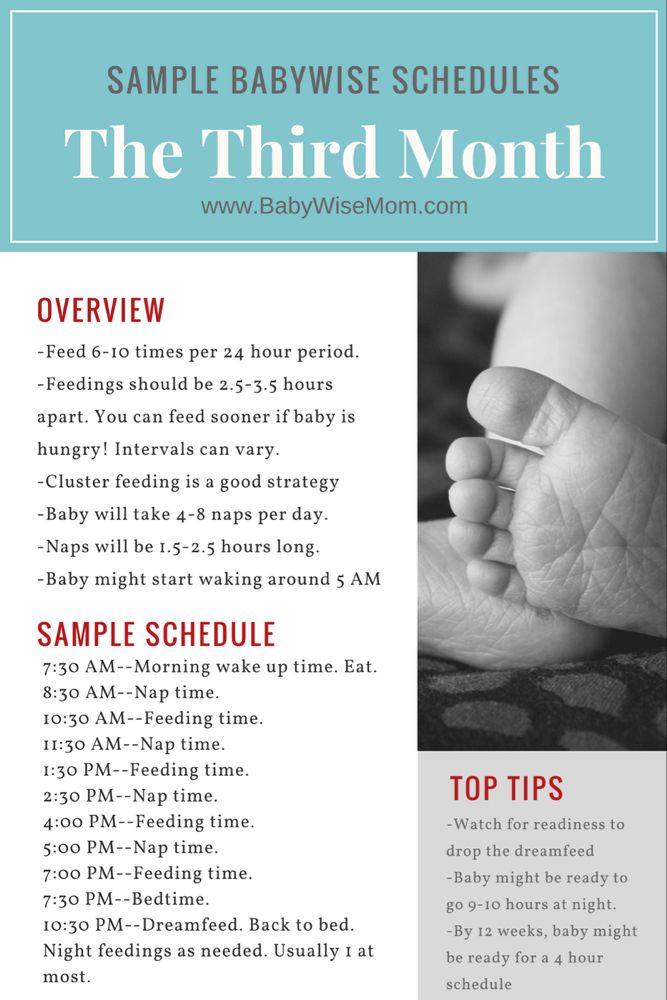Baby feeding hours
How Often and How Much Should Your Baby Eat?
By: Sanjeev Jain, MD, FAAP
One of the most common questions new parents have is how often their baby should eat. The best answer is surprisingly simple: in general, babies should be fed whenever they seem hungry.
How do I know when my baby is hungry?
For babies born
prematurely or with certain medical conditions, scheduled feedings advised by your pediatrician are best. But for most healthy, full-term infants, parents can look to their baby rather than the clock for hunger cues. This is called feeding on demand, or
responsive feeding.
Hunger cues
A hungry baby often will cry. But it's best to watch for hunger cues before the baby starts crying, which is a late sign of hunger and can make it hard for them to settle down and eat.
Some other typical hunger cues in babies:
Licking lips
Sticking tongue out
Rooting (moving jaw and mouth or head in search of breast)
Putting his/her hand to mouth repeatedly
Opening her mouth
Fussiness
Sucking on everything around
It is important to realize, however, that every time your baby cries or sucks it is not necessarily because he or she is hungry. Babies suck not only for hunger, but also for comfort; it can be hard at first for parents to tell the difference. Sometimes, your baby just needs to be cuddled or changed.
General guidelines for baby feeding
It is important to remember all babies are different―some like to snack more often, and others drink more at one time and go longer between feedings. However, most babies will drink more and go longer between feedings as they get bigger and their tummies can hold more milk:
Most newborns eat every 2 to 3 hours, or 8 to 12 times every 24 hours. Babies might only take in half ounce per feeding for the first day or two of life, but after that will usually drink 1 to 2 ounces at each feeding. This amount increases to 2 to 3 ounces by 2 weeks of age.
At about 2 months of age, babies usually take 4 to 5 ounces per feeding every 3 to 4 hours.
At 4 months, babies usually take 4 to 6 ounces per feeding.

At 6 months, babies may be taking up to 8 ounces every 4 to 5 hours.
Most babies will increase the amount of formula they drink by an average of 1 ounce each month before leveling off at about 7 to 8 ounces per feeding. Solid foods should be started at about 6 months old.
Concerns about overfeeding or underfeeding your baby
Too full?
Babies are usually pretty good at eating the right amount, but they can sometimes take in more than they need. Infants who are bottle feeding may be more likely to overfeed, because drinking from a bottle may take less effort than breastfeeding.
Overfed babies can have stomach pains, gas, spit up or vomit and be at higher risk for obesity later in life. It's better to offer less, since you can always give more if your baby wants it. This also gives babies time to realize when they're full.
If you are concerned your baby wants to eat
all the time―even when he or she is full―talk with your pediatrician. Pacifiers may be used after feeding to help sooth healthy-weight babies who like to suck for comfort, rather than nutrition. For babies who are breastfed, it's best to wait to offer pacifiers until around 3 to 4 weeks of age, when breastfeeding is well-established.
Pacifiers may be used after feeding to help sooth healthy-weight babies who like to suck for comfort, rather than nutrition. For babies who are breastfed, it's best to wait to offer pacifiers until around 3 to 4 weeks of age, when breastfeeding is well-established.
Trouble gaining weight?
Most babies will double their birth weight by 5 months of age and triple their birth weight by their first birthday. If your baby is having trouble gaining weight, don't wait too long between feeding―even if it means waking your baby. Be sure to talk with your pediatrician about how often and how much to feed your baby.
How do I know if my baby is getting enough to eat?
Daily diapers
A newborn's
diaper is a good indicator of whether he or she is getting enough to eat. In the first few days after birth, a baby should have 2 to 3 wet diapers each day. After the first 4 to 5 days, a baby should have at least 5 to 6 wet diapers a day. Stool frequency is more variable and depends whether your baby is
breastfed or formula fed.
Growth charts
During regular health check-ups, your pediatrician will check your baby's weight and plot it on a growth chart. Your baby's progress on the growth chart is one way to tell whether or not they are getting enough food. Babies who stay in healthy growth percentile ranges are probably getting a healthy amount of food during feedings.
Remember
Talk with your pediatrician if you have any questions or concerns about your baby getting the right amount to eat.
More information:
- Making Sure Your Baby is Getting Enough Milk
- Amount and Schedule of Formula Feedings
- Is Your Baby Hungry or Full? Responsive Feeding Explained (Video)
- Remedies for Spitty Babies
- Ask the Pediatrician: With the baby formula shortage, what should I do if I can't find any?
- Ask the Pediatrician: How should we feed our baby if we're running low on money?
-
Airplane Choo Choo: A Feeding Guide for Children (National Dairy Council)
About Dr.
 Jain:
Jain:
Sanjeev Jain, MD, FAAP, is a Clinical Associate Professor of General Pediatrics and Adolescent Medicine at the University of Wisconsin School of Medicine and Public Health. Within the American Academy of Pediatrics, he is a member of the Section on International Child Health and the Wisconsin State Chapter.
The information contained on this Web site should not be used as a substitute for the medical care and advice of your pediatrician. There may be variations in treatment that your pediatrician may recommend based on individual facts and circumstances.
Amount and Schedule of Baby Formula Feedings
- In the first week after birth, babies should be eating no more than about 1 to 2 ounces (30 to 60 ml) per feed.
- During the first month, babies gradually eat more until they take 3 to 4 ounces (90 to 120 ml) per feed, amounting to 32 ounces per day.
 Formula-fed babies typically feed on a more regular schedule, such as every 3 or 4 hours. Breastfed babies usually take smaller, more frequent feedings than formula-fed infants.
Formula-fed babies typically feed on a more regular schedule, such as every 3 or 4 hours. Breastfed babies usually take smaller, more frequent feedings than formula-fed infants.
If your baby sleeps longer than 4 to 5 hours during the first few weeks after birth and starts missing feedings, wake them up and offer a bottle.
By the end of the first month: Your baby will be up to at least 3 to 4 ounces (120 mL) per feeding, with a fairly predictable schedule of feedings about every 3 to 4 hours.
By 6 months: Your baby will consume 6 to 8 ounces (180–240 mL) at each of 4 or 5 feedings in 24 hours.
Formula feeding based on body weight
On average, your baby should take in about 2½ ounces (75 mL) of infant formula a day for every pound (453 g) of body weight. But they probably will regulate their intake from day to day to meet their own specific needs, so let them tell you when they've had enough. If they become fidgety or easily distracted during a feeding, they're probably finished. If they drain the bottle and continues smacking their lips, they might still be hungry.
If they become fidgety or easily distracted during a feeding, they're probably finished. If they drain the bottle and continues smacking their lips, they might still be hungry.
There are high and low limits, however. If your baby consistently seems to want more or less than this, discuss it with your pediatrician. Your baby should usually drink no more than an average of about 32 ounces (960 mL) of formula in 24 hours. Some babies have higher needs for sucking and may just want to suck on a pacifier after feeding.
On-demand feeding
Initially it is best to feed your formula-fed newborn a bottle on demand, or whenever they cry with hunger. As time passes, your baby will begin to develop a fairly regular timetable of their own. As you become familiar with their signals and needs, you'll be able to schedule their feedings around their routine.
Eating & sleeping patterns
Between 2 and 4 months of age (or when the baby weighs more than 12 lb. [5.4 kg]), most formula-fed babies no longer need a middle-of-the-night feedings. They're consuming more during the day, and their sleeping patterns have become more regular (although this varies considerably from baby to baby). Their stomach capacity has increased, too, which means they may go longer between daytime feedings—occasionally up to 4 or 5 hours at a time.
They're consuming more during the day, and their sleeping patterns have become more regular (although this varies considerably from baby to baby). Their stomach capacity has increased, too, which means they may go longer between daytime feedings—occasionally up to 4 or 5 hours at a time.
If your baby still seems to feed very frequently or consume larger amounts, try distracting them with play or with a pacifier. Sometimes patterns of obesity begin during infancy, so it is important not to overfeed your baby.
Getting to know your baby's feeding needs
The most important thing to remember, whether you breastfeed or bottlefeed, is that your baby's feeding needs are unique. No book―or website―can tell you precisely how much or how often they need to be fed or exactly how you should handle them during feedings. You will discover these things for yourself as you and your baby get to know each other.
More information
- How Often and How Much Should Your Baby Eat?
- Making Sure Your Baby is Getting Enough Milk
- Is Your Baby Hungry or Full? Responsive Feeding Explained (Video)
- Remedies for Spitty Babies
- Last Updated
- 5/16/2022
- Source
- Adapted from Caring for Your Baby and Young Child: Birth to Age 5 7th Edition (Copyright © 2019 American Academy of Pediatrics)
The information contained on this Web site should not be used as a substitute for the medical care and advice of your pediatrician. There may be variations in treatment that your pediatrician may recommend based on individual facts and circumstances.
There may be variations in treatment that your pediatrician may recommend based on individual facts and circumstances.
Daily routine for a child under 1 year old
Daily routine is a system for distributing periods of sleep and wakefulness, meals, hygiene and health procedures, activities and independent human activities throughout the day.
Compliance with a rational daily routine corresponding to the age characteristics of the child contributes to his healthy growth and development. Getting used to performing various types of activities at the same time, the child is prepared for the upcoming type of activity at every moment of time, which ensures their easier and faster implementation. Compliance with the correct daily routine provides a good mood for the child and maintains a keen interest in the study of the world around him, contributing to his normal motor and psychoverbal development.
The child's daily routine includes the following obligatory elements: diet, time spent outdoors during the day, frequency and duration of sleep, mandatory classes to develop skills in accordance with age, free time.
In the first months after birth, a healthy newborn baby sleeps for most of the day, since all external stimuli are very strong for the nervous system of a child, accustomed to a cozy intrauterine environment, and cause its rapid exhaustion. As the child grows older, the duration of sleep gradually decreases and the time of wakefulness increases.
| Age | Daytime sleep mode | Night sleep | Wake mode |
| From birth to 2 months | 6 x 2.5 hours | 6 hours | During feeding |
| 2-4 months | 5 times 2-2.5 hours | 6.5 hours | 4 x 1.5 hours |
| 4-6 months | 4-5 times for 2 hours | 7 hours | 4 times 2 hours |
| 6-9 months | 3-4 times for 1.5-2 hours | 8 hours | 4 x 2.5 hours |
| 9-12 months | 2 x 1. 5-2 hours 5-2 hours | 9-10 hours | 4 times for 3-4 hours |
Closely related to the sleep-wake mode is the feeding mode of the baby. The sleep of a child in the first months of life is very sensitive and is easily disturbed under the influence of various extraneous stimuli, including hunger.
| Age | Mode | Example |
| From birth to 2 months | 7-8 times, every 3 hours | 6,9,12,15,18,21,24 (no night feeding) |
| From 2 to 6 months | 6-7 times, every 3.5 hours | 6, 9.30, 13, 16.30, 20, 23.30 (without night feeding) 6, 9.30, 13, 16.30, 20, 23.30, 03 (with night feeding) |
| From 7-12 months | 5 times, every 4 hours | 6,10,14,18,22 |
A child's stay in the fresh air is essential in the daily routine. The total duration of stay in the open air for children under 1 year of age should be at least 5-6 hours a day. Fresh air has a calming effect on the baby, improves metabolic processes, and increases the body's defenses. In the summer, all games and activities should be held outdoors; in the cold and transitional seasons, two one-time walks of 1.5-2 hours are provided.
The total duration of stay in the open air for children under 1 year of age should be at least 5-6 hours a day. Fresh air has a calming effect on the baby, improves metabolic processes, and increases the body's defenses. In the summer, all games and activities should be held outdoors; in the cold and transitional seasons, two one-time walks of 1.5-2 hours are provided.
Fresh air also has a beneficial effect on sleep. By acting on the skin and mucous membranes of the nose and upper respiratory tract, it provides a faster fall asleep of the child and a higher quality of sleep. Sleeping outside can replace a walk, especially during the cold season.
The child's daily routine is generally individual, but ideally, one should strive to ensure that the child eats after waking up, and then stays awake until the next sleep. A well-slept baby eats with appetite and then calmly and actively plays or engages, and tired of games, easily goes to sleep.
When your baby is awake, try to keep him active and cheerful. It is necessary to dress the child in loose clothing that does not hinder movement, provide access to toys appropriate for his age, and most importantly, actively participate in games and activities with the baby as a whole family.
It is necessary to dress the child in loose clothing that does not hinder movement, provide access to toys appropriate for his age, and most importantly, actively participate in games and activities with the baby as a whole family.
Author - Physiotherapist - DMITRIENKO T.G.
Approximate daily routine for children under 1 year old
08/21/2018
≈ 4 min reading time
We offer you an approximate daily routine. It will not be suitable for all children, but you can develop your own based on it, making some changes in it after consulting a pediatrician.
Be prepared for the fact that the baby will make its own adjustments, and some of this is not very suitable for you. It's OK. The main thing is to have something to build on. If the schedule has gone astray for reasons beyond your control, try to return to the original version.
Do not forget to include in the schedule not only sleep, feeding and walks, but also hours for games and communication with the child, as well as the time when he can be alone with himself - conditionally, of course, because such babies cannot be left unattended.
Offer your baby healthy and tasty Agusha Zasypay-ka products, which are specially designed for use before bedtime. These are live drinking yogurt with apple flavor and natural lemon balm extract, cottage cheese with strawberry, banana flavor and natural lemon balm extract, as well as cereals with prebiotics and cereals: buckwheat milk and rice milk with apple and pear, which will help your child to tune in to a healthy and deep sleep.
Baby routine 0 to 2 months
At the age of 1 - 2 months, the baby sleeps about 18 hours a day.
- 7:00 a.m. - wake up, water procedures, feeding
- 7:30 a.m. to 9:00 a.m. - awake
- 9:00 - feeding
- From 9:00 to 10:00 - the first morning dream
- 10:00 to 11:00 - active wakefulness
- 11:00 - feeding
- From 11:30 to 12:30 - second morning sleep in a stroller for a walk
- 13:00 - feeding
- From 13:00 to 14:00 - active wakefulness, games
- From 14:00 to 15:00 - daytime sleep in a stroller outside during a walk
- 15:00 - feeding
- From 15:00 to 17:00 - games, wakefulness, communication
- 17:00 - feeding
- From 17:00 to 18:00 - evening sleep
- From 18:00 to 19:00 - quiet wakefulness
- 19:00 - feeding
- From 19:00 to 20:30 - communication
- 20:30 bathing
- 21:00 - feeding, night sleep
At night, you need to feed no more than 1 time in 4 hours.
2 to 3 month baby routine
At this age, the baby sleeps noticeably less: there are periods of prolonged daytime wakefulness. The first morning sleep leaves, and when the child does not sleep, he behaves more actively. Day rest is shortened. A night sleep regime is being developed: now its duration is 10-12 hours with breaks for feeding.
If this mode suits everyone and the baby does not have serious objections, then it can be used at 3 months.
- 7:00 a.m. - wake up, water procedures, feeding
- 7:30 a.m. to 9:00 a.m. - awake
- 9:00 - feeding
- From 9:00 to 10:00 - massage, special gymnastics
- From 10:00 to 11:00 - fun and games in the crib
- 11:00 - feeding
- From 11:30 to 12:30 - second morning sleep in a stroller for a walk
- 13:00 - feeding
- From 13:00 to 14:00 - you can learn to crawl
- From 14:00 to 15:00 - daytime sleep in a stroller outside during a walk
- 15:00 - feeding
- From 15:00 to 17:00 - communication with relatives or with everyone who comes to visit
- 17:00 - feeding
- From 17:00 to 18:00 - evening sleep
- From 18:00 to 19:00 - reading fairy tales and poems, listening to calm music
- 19:00 - feeding
- From 19:00 to 20:30 - toys
- 20:30 bathing
- 21:00 - feeding, night sleep
4 month old baby routine
At 4 months, the baby is almost an adult. Therefore, the mode can be adjusted. First, you need to reduce the number of feedings (now this can be done every 3 or even 4 hours, depending on the needs of the child). Secondly, evening sleep ceases to be a "mandatory item on the program." At this age, it can, on the contrary, interfere with night rest. Now the child sleeps 17 - 18 hours a day. And the third thing to do is to enter the ritual of going to bed (of course, if you have not done this before). Daily baths, quiet games, lullabies and even a simple kiss goodnight will help with this.
Therefore, the mode can be adjusted. First, you need to reduce the number of feedings (now this can be done every 3 or even 4 hours, depending on the needs of the child). Secondly, evening sleep ceases to be a "mandatory item on the program." At this age, it can, on the contrary, interfere with night rest. Now the child sleeps 17 - 18 hours a day. And the third thing to do is to enter the ritual of going to bed (of course, if you have not done this before). Daily baths, quiet games, lullabies and even a simple kiss goodnight will help with this.
- 7:00 - wake up, water procedures, feeding
- 7:30 a.m. to 9:00 a.m. - awake
- 9:00 - feeding
- From 9:00 to 10:00 - massage, gymnastics
- From 10:00 to 11:30 - fun and games in the crib
- From 11:30 to 12:30 - second morning sleep in a stroller for a walk
- 13:00 - feeding
- From 13:00 to 14:00 - educational toys
- From 14:00 to 15:00 - daytime sleep in a stroller outside during a walk
- From 15:00 to 17:00 - communication
- 17:00 - feeding
- From 17:00 to 19:00 - reading fairy tales and poems, listening to calm music
- From 19:00 to 20:30 - toys or an evening walk (at your discretion)
- 20:30 bathing
- 21:00 - feeding, night sleep
5 month baby routine
The mode of sleep, wakefulness and feeding during this period is often rebuilt. Sometimes the baby can sleep through the night without getting up for feeding, or wake up very early and not go to bed in the morning. At 5 - 6 months, the baby should sleep about 16 hours a day.
Sometimes the baby can sleep through the night without getting up for feeding, or wake up very early and not go to bed in the morning. At 5 - 6 months, the baby should sleep about 16 hours a day.
- 8:00 a.m. to 8:30 a.m. - wake up, water procedures, feeding
- 10:00 - sleep
- From 11:00 to 13:00 - feeding, walking, games
- 13:00 - daytime sleep
- 14:00 - feeding, games
- From 17:00 to 17:30 - feeding, sleeping
- From 17:30 to 18:30 - games
- 18:30 bathing
- From 19:00 to 19:30 - feeding
- 20:00 - night sleep
Child's daily routine at 6 months
At the age of 6 months, the baby can wake up at night - this is due to the abundance of impressions. Parents need to calm the child, and he will quickly fall asleep again. Experts also advise putting him to bed half an hour earlier: this can reduce the number of night awakenings.
Now the time of total sleep per day is the same - about 16 hours, while there should be three daytime sleeps, 1. 5 - 2 hours each. If the baby is already teething, then he can wake up 2-3 times a night. In this case, he must be fed.
5 - 2 hours each. If the baby is already teething, then he can wake up 2-3 times a night. In this case, he must be fed.
- 7:00 - wake up, water procedures, feeding
- 8:30 - breakfast, sleep
- 10:00 - wake up, walk about 90 minutes
- 12:30 - feeding, play, sleep
- 15:00 - awakening, feeding, educational games
- 17:30 - feeding
- 20:15 - dinner, bathing, socializing
- 20:45 - night sleep
7 month baby routine
At this age and up to 9months the child sleeps about 15 hours a day. If the baby wakes up at night, talk to him quietly, calmly, and he will fall asleep again.
- 7:00 - wake up, water procedures, feeding
- 7:30 am family breakfast
- 8:30 - sleep
- 10:15 - feeding, walking
- 11:30 - lunch
- From 12:45 to 14:30 - afternoon nap, feeding, walk
- 17:15 - dinner and games
- 18:00 - feeding
- 18:30 - bathing and getting ready for bed
- 19:00 - night sleep with feeding breaks at 2:30 or 3:00 and at 4:30 or 5:00
8 month baby routine
At this age, the baby begins to painfully experience separation from his mother, so it is important to organize the child’s sleep so that he sees his mother when he wakes up.
- 7:00 - wake up, water procedures, feeding
- 8:00 - first dream
- 9:30 - feeding
- 10:30 - games, walk
- 14:00 - feeding
- 2:15 pm - second dream
- 16:30 - games, wakefulness, communication
- 18:00 - feeding
- 18:15 - games, being awake, socializing
- 19:00 - bathing and getting ready for bed
- 19:30 - third dream
- 22:00 - feeding
- 22:15 - night sleep
Child's day routine at 9months
From 9 to 12 months, the baby, as a rule, sleeps at night for 10 - 12 hours without a break, and also 2 times a day for 1.5 - 2 hours. At this age, it is very important for him to fully restore his strength - this is of great importance for the development of the child.
- 8:00 a.m. to 9:00 a.m. - wake up, water procedures, feeding
- 9:30 am - breakfast
- 10:00 to 11:00 - games
- 11:00 - short nap
- From 12:00 to 13:00 - feeding
- From 13:00 to 14:00 - games
- 14:00 - snack
- 2:30 pm to 4:00 pm long nap
- From 16:00 to 17:00 - feeding
- 18:00 - games
- 18:30 - dinner
- From 19:00 to 20:00 - games
- 20:00 - bathing, feeding (drink)
- 21:00 - night sleep
10 month old baby routine
From 10 to 12 months, the baby sleeps about 13 hours a day, in his regime there are 2 daytime sleeps, one of which falls in the morning.
- 7:00 - wake up, water procedures, feeding
- 8:00 am - breakfast and games
- 9:00 to 10:00 - feeding and sleeping
- 11:00 - wake up and feed
- 12:00 - lunch and games
- 13:40 - afternoon nap, feeding
- 15:30 - feeding, playing, walking
- 17:40 - lunch, games, bathing
- 19:00 - getting ready for bed, communication
- 20:00 - bathing, feeding (drink)
- 21:00 - night sleep
Child's daily routine at 11-12 months
At this age, the regime is already formed, and it is especially important to stick to it. If the baby is put to bed later than usual, he will wake up at night, sleep restlessly and will not be able to rest well.
- 7:00 a.m. - wake up, water procedures, feeding
- 8:30 - breakfast, games, reading books
- 10:00 - rest, sleep
- 11:30 - feeding, playing, walking
- 12:30 - lunch, games, books
- 14:00 - afternoon nap
- 15:00 - wake up, feed, play
- 17:30 - dinner, games
- 18:30 - rest, bathing
- 20:00 - bathing, feeding (drink)
- 21:00 - night sleep
And from the year the baby begins a new period in life, requiring a different regimen.











